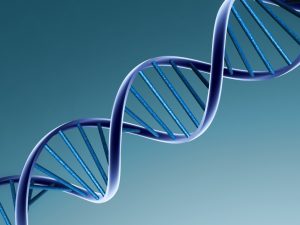By: Chris Neill
On June 13, 2013, the U.S. Supreme Court clarified the obvious: in order to receive patent protection, one must create something. Justice Clarence Thomas’s 18-page opinion in Association for Molecular Pathology v. Myriad Genetics, Inc. held that Myriad’s patent protection over unaltered genes it isolated from the human bloodstream were invalid, though genes created synthetically were eligible for patent protection.
The Supreme Court has long held that natural “discoveries” are not eligible for patent protection, in which the government effectively grants a temporary monopoly over inventions and discoveries in order to encourage companies to invest in research and development. The U.S. Patent Office explains that the courts have typically excluded “laws of nature, natural phenomena, and abstract ideas” from patent protection, since such concepts “cover the basic tools of scientific and technological work” upon which every would-be scientist or inventor builds his work, inventions and discoveries. The Myriad ruling now clarifies the Court’s inclusion of naturally occurring genetic material in the category of natural discoveries.
The ruling was a major blow to Myriad Genetics, which had discovered and isolated two specific genes, analysis of which could help predict a woman’s chances of developing breast or ovarian cancer. According to the Supreme Court, Myriad did not create anything. “To be sure, it found an important and useful gene, but separating that gene from its surrounding genetic material is not an act of invention,” Justice Thomas wrote in his majority opinion. “Groundbreaking, innovative, or even brilliant discovery does not by itself satisfy the [patent law] inquiry.”
Myriad was offering genetic tests to help women determine their risk of developing hereditary cancers. Their patent-protected monopoly, then, allowed them to offer the testing to patients for a very high price. To be fair, charging such a price allows them to recoup the sunk costs of developing the beneficial technology. However, the lack of competition driving down the price was preventing many women from accessing the test.
Now that several of Myriad’s patents have been invalidated, many of the barriers to entry for competitors in the genetic testing market have disappeared. Dr. Sherri J. Bale, Vice President of BioReference Laboratories, Inc., was optimistic about the implications of the ruling. “We’ve waited a long time for this day, and now the playing field is leveled,” said Dr. Bale. “We will deliver this test, as well as others, which until now we’ve been restricted from offering. We will now be able to compete on price as well as quality, customer service, and patient-friendly billing policies. Our alternative, called BRACfast, will be available August 1.”
Others have a less optimistic outlook on the ruling’s implications. Myriad itself claims that the invalidated patents represent only a fraction of its intellectual property portfolio so the impact on its business should be minimal. The Genomics Law Report also notes that many of the patents barring competitors were due to expire soon anyway. By the time competitors develop the technology, get the appropriate regulatory approval and bring the technology to market, most of the patents in question would have likely expired. Myriad’s head start on developing the test as well as interpreting the results still represents a sizable competitive advantage.
Even if the short-term impact isn’t earth-shaking, the lasting effects of lowered prices from the lack of monopoly will be beneficial. Demand for the testing has skyrocketed in recent months since actress Angelina Jolie shared her story of testing positive for the gene mutation and subsequently undergoing a preventative double mastectomy. Additionally, more widespread availability of the test coupled with lower costs will help patients get second opinions from different doctors using tests from different companies.
Finally, there still exists further incentive for research and innovation in the field of genetics. The Court’s ruling left the door open for patent protection on synthesized DNA or on specific methods for isolating and using naturally occurring genes. What the ruling does accomplish is allowing researchers, doctors, and competing companies to make use of isolated DNA without infringing on Myriad’s patents. Such innovation will surely bring about a brighter future for the field of genetic research and for medicine in general.



